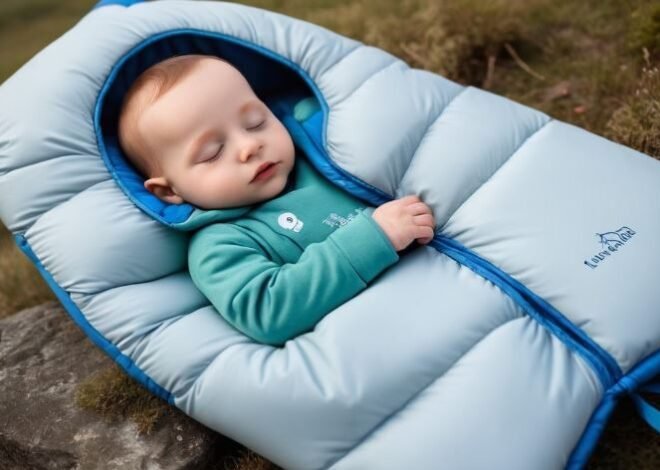
How to travel with a 3-month-old?
Traveling with a 3-month-old involves careful planning, focusing on essentials like feeding, diapering, and creating a comfortable sleep environment.
Traveling with a 3-month-old requires special attention to the baby’s needs and considerations for a smooth journey. Packing essential items such as diapers, wipes, formula or breastfeeding supplies, and a changing pad is crucial. Carrying a portable bassinet or crib provides a familiar and secure sleep environment for the baby, promoting comfort during travel.
Feeding is a priority, whether breastfeeding or using formula. Ensuring a sufficient supply of baby essentials and planning for breaks during the journey are vital. It’s beneficial to anticipate the baby’s feeding and nap schedule and plan travel activities around those times. Additionally, dressing the baby in comfortable layers and bringing extra clothes accommodates changing weather conditions.
Parents should consider the mode of transportation, whether by car or plane, and adapt the travel environment to cater to the baby’s comfort. Being prepared for unexpected situations and staying flexible with the schedule contribute to a positive travel experience for both parents and the 3-month-old.
How to adjust baby to time change travel?
Adjusting a baby to time change during travel involves gradually shifting the routine, exposing the baby to natural light, and maintaining consistency with feeding and sleep schedules.
Time change can disrupt a baby’s internal clock, making it challenging for them to adjust to a new schedule during travel. To ease this transition, parents can gradually shift the baby’s routine a few days before the trip, adjusting feeding, nap, and bedtime by small increments.
Exposing the baby to natural light at the destination helps reset their internal clock. Daytime sunlight signals to the baby’s brain that it’s time to be awake, aiding in adapting to the local time. Similarly, creating a dark and quiet environment at night promotes sleep during the adjusted bedtime.
Consistency is key in helping the baby adapt. Maintaining regular feeding and sleep schedules as closely as possible, even during travel, provides a sense of predictability for the baby. Using familiar sleep cues, such as a favorite blanket or bedtime routine, can also signal to the baby that it’s time to sleep, aiding in adjusting to the new time zone.
How to travel with a 4-month-old?
Traveling with a 4-month-old involves meticulous planning, focusing on essentials like feeding, diapering, and providing a safe and comfortable sleep environment.
At 4 months old, infants are more alert and interactive, making travel a unique experience for both parents and the baby. Packing essentials such as diapers, wipes, formula or breastfeeding supplies, and a changing pad is crucial. Carrying a portable bassinet or crib provides a familiar sleep environment, promoting comfort and security during travel.
Feeding considerations are essential, whether breastfeeding or using formula. Planning for breaks that allow the baby to stretch, feed, and play contributes to a more relaxed journey. Dressing the baby in comfortable layers and bringing extra clothes accommodate changing weather conditions.
Choosing baby-friendly accommodations and transportation options simplifies logistics. Using a stroller or baby carrier makes it easier for parents to navigate different settings while keeping the baby close. Being flexible with the schedule and adapting to the baby’s cues contribute to a positive travel experience for both parents and the 4-month-old.
Is it easier to travel east or west?
The ease of travel, whether east or west, depends on individual preferences, the direction of time change, and how well a baby adapts to new schedules.
The ease of travel, whether east or west, is subjective and varies based on factors such as personal preferences, the specific direction of time change, and the baby’s adaptability. Traveling west generally involves “gaining” time, which may be perceived as more manageable for some individuals, as the day becomes longer.
On the other hand, traveling east often means “losing” time, which may pose challenges, especially when adjusting to an earlier schedule. However, some parents find that gradually shifting the baby’s routine before the trip and exposing them to natural light at the destination helps in adapting to the new time zone.
Ultimately, the ease of travel direction depends on factors such as the duration of the journey, the baby’s temperament, and how well parents plan for time change adjustments. Considering these factors allows parents to make informed decisions that suit their preferences and the needs of the baby during travel.
How to adjust sleep schedule for travel?

Adjusting a baby’s sleep schedule for travel involves gradually shifting the routine, exposing the baby to natural light, and maintaining consistency with sleep cues and bedtime rituals.
Changing time zones or routines during travel can disrupt a baby’s sleep schedule, leading to challenges for parents. To ease this transition, gradual adjustments to the sleep routine a few days before the trip can be beneficial. Shifting bedtime and nap times in small increments helps the baby adapt to the upcoming changes.
Exposing the baby to natural light at the destination assists in resetting their internal clock. Daytime sunlight signals that it’s time to be awake, aiding in the adjustment to the local time zone. Creating a calm and dark environment at night, similar to the baby’s usual sleep conditions, promotes restful sleep during the adjusted bedtime.
Consistency is crucial for successful sleep schedule adjustments. Maintaining familiar sleep cues, such as a favorite blanket or bedtime rituals, helps signal to the baby that it’s time to sleep. Adapting the sleep environment to mimic conditions at home, such as using white noise or bringing a familiar sleep aid, contributes to a smoother adjustment during travel.
How to travel with a 5-month-old?

Traveling with a 5-month-old involves planning for essentials like feeding, diapering, providing entertainment, and creating a safe sleep environment.
At 5 months old, infants are becoming more active and curious, making travel an exciting experience for both parents and the baby. Packing essentials such as diapers, wipes, formula or breastfeeding supplies, and a changing pad is crucial. Ensuring the baby’s comfort during travel involves dressing them in comfortable layers and bringing extra clothes to accommodate changing weather conditions.
Feeding considerations remain a priority, whether breastfeeding or using formula. Planning for breaks that allow the baby to feed, stretch, and play contributes to a smoother journey. Providing entertainment, such as favorite toys or interactive items, helps keep the baby engaged during travel.
Creating a safe sleep environment is essential, and packing a portable crib or bassinet provides a familiar sleep space for the baby. Choosing accommodations that cater to family needs, such as baby-friendly amenities and proximity to necessary facilities, enhances the overall travel experience.
Being flexible with the schedule and adapting to the baby’s cues contribute to a positive travel experience for both parents and the 5-month-old. Maintaining a sense of routine while incorporating new and exciting experiences allows for a balanced and enjoyable journey.



